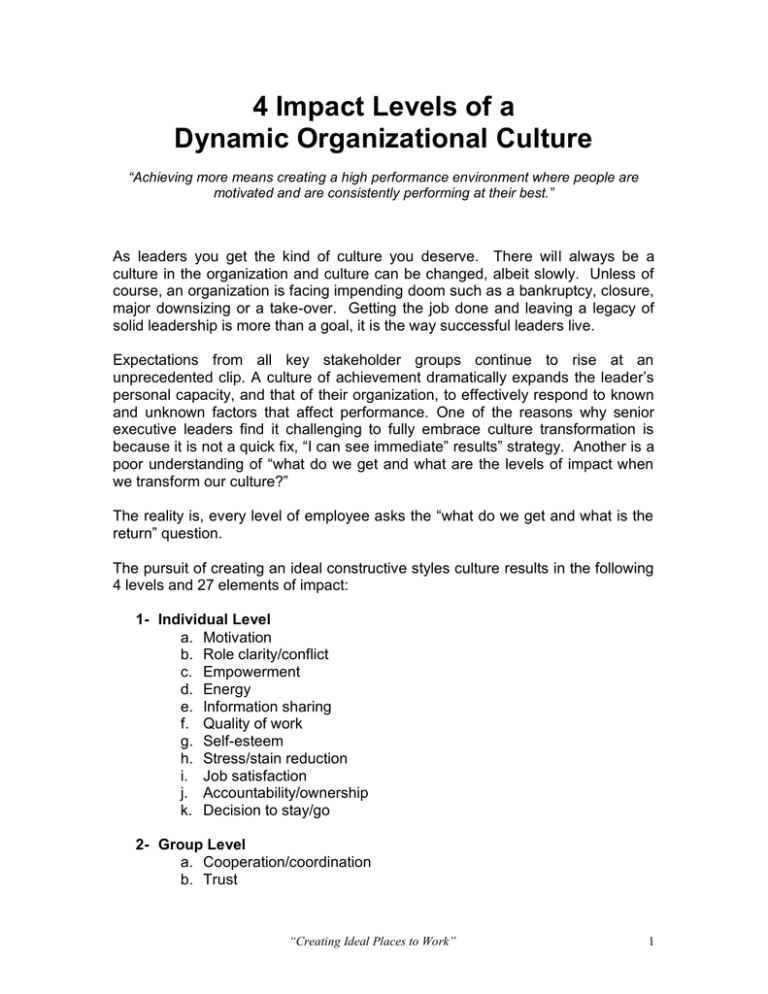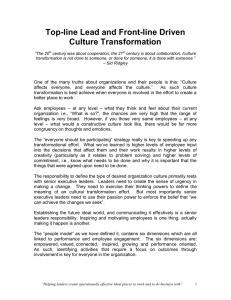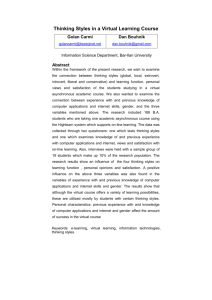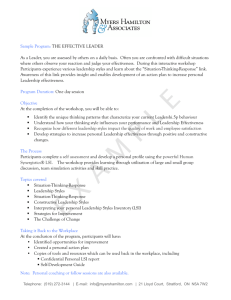
4 Impact Levels of a
Dynamic Organizational Culture
“Achieving more means creating a high performance environment where people are
motivated and are consistently performing at their best.”
As leaders you get the kind of culture you deserve. There will always be a
culture in the organization and culture can be changed, albeit slowly. Unless of
course, an organization is facing impending doom such as a bankruptcy, closure,
major downsizing or a take-over. Getting the job done and leaving a legacy of
solid leadership is more than a goal, it is the way successful leaders live.
Expectations from all key stakeholder groups continue to rise at an
unprecedented clip. A culture of achievement dramatically expands the leader’s
personal capacity, and that of their organization, to effectively respond to known
and unknown factors that affect performance. One of the reasons why senior
executive leaders find it challenging to fully embrace culture transformation is
because it is not a quick fix, “I can see immediate” results” strategy. Another is a
poor understanding of “what do we get and what are the levels of impact when
we transform our culture?”
The reality is, every level of employee asks the “what do we get and what is the
return” question.
The pursuit of creating an ideal constructive styles culture results in the following
4 levels and 27 elements of impact:
1- Individual Level
a. Motivation
b. Role clarity/conflict
c. Empowerment
d. Energy
e. Information sharing
f. Quality of work
g. Self-esteem
h. Stress/stain reduction
i. Job satisfaction
j. Accountability/ownership
k. Decision to stay/go
2- Group Level
a. Cooperation/coordination
b. Trust
“Creating Ideal Places to Work”
1
c. Team relations
d. Problem-solving effectiveness
e. Creativity
3- Unit Level
a. Efficiency
b. Reliability
c. Adaptability/flexibility
d. Quality of products/services
e. Goal clarity
4- Organization Level
a. Consistency of performance
b. Employee engagement
c. Customer satisfaction
d. Enhanced supplier relationships
e. Image
Every organization has a culture – our belief is – why not have the culture that
you want? In the final analysis culture influences behaviour. How people feel
about how they need to behave in order to fit in and be successful determines
employee engagement.
Getting the best – consistently and constantly -- from your organization and its
people is not the result of a program or process improvement strategy or
initiative. It is the result of a constructive styles culture that shapes behaviour
and performance.
Sid Ridgley
Tel: +1 905-895-7900
Toll free: +1-888-291-7892
Email: sridgley@simulcorp.com OR sidridgley@utilitypulse.com
About the Author:
Sid Ridgley is an organization culture transformation specialist who has
extensive real-life business experience. For over 30 years he has assisted
leaders in creating more value.
© Copyright, all rights reserved 2012
“Creating Ideal Places to Work”
2




